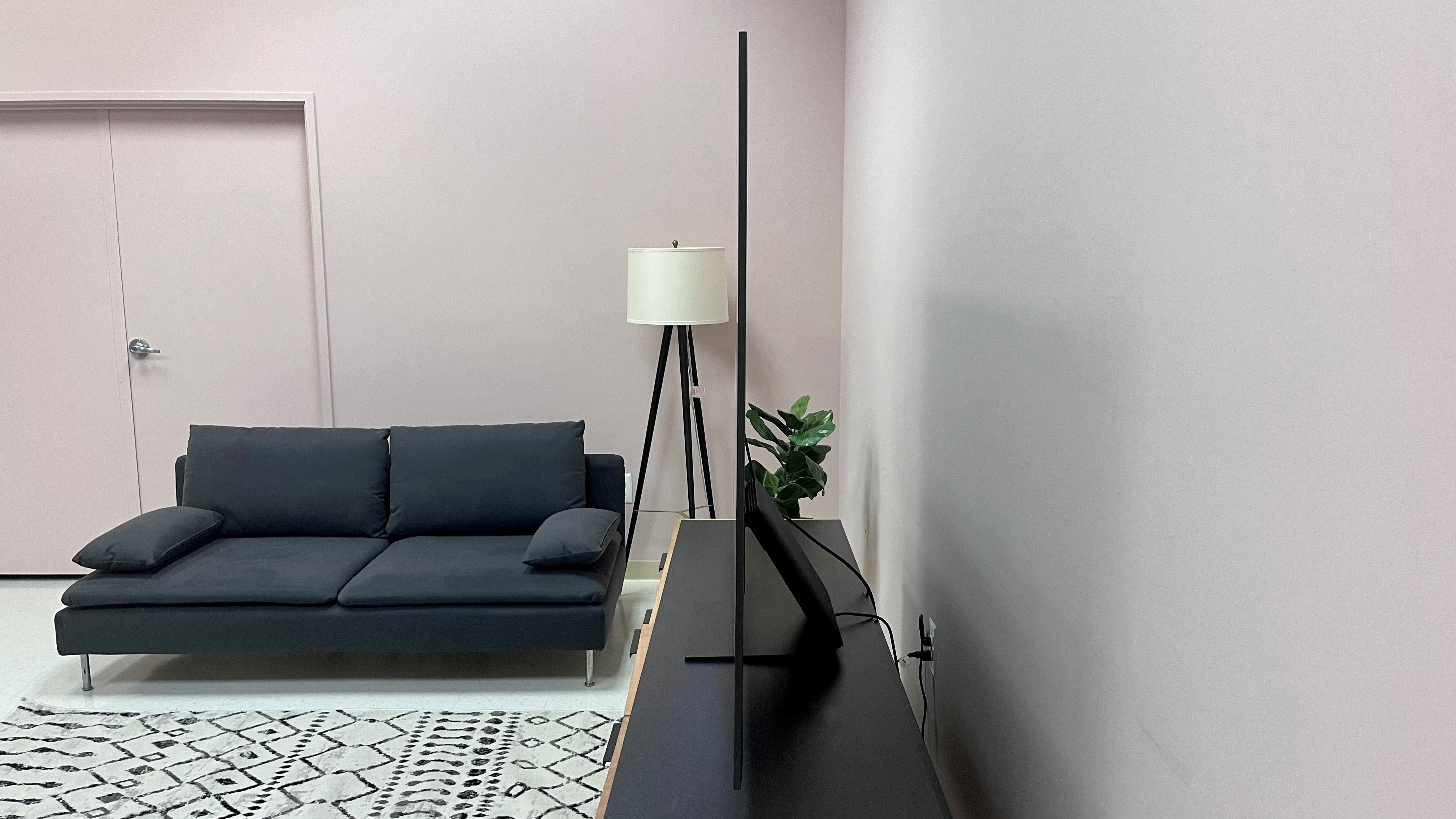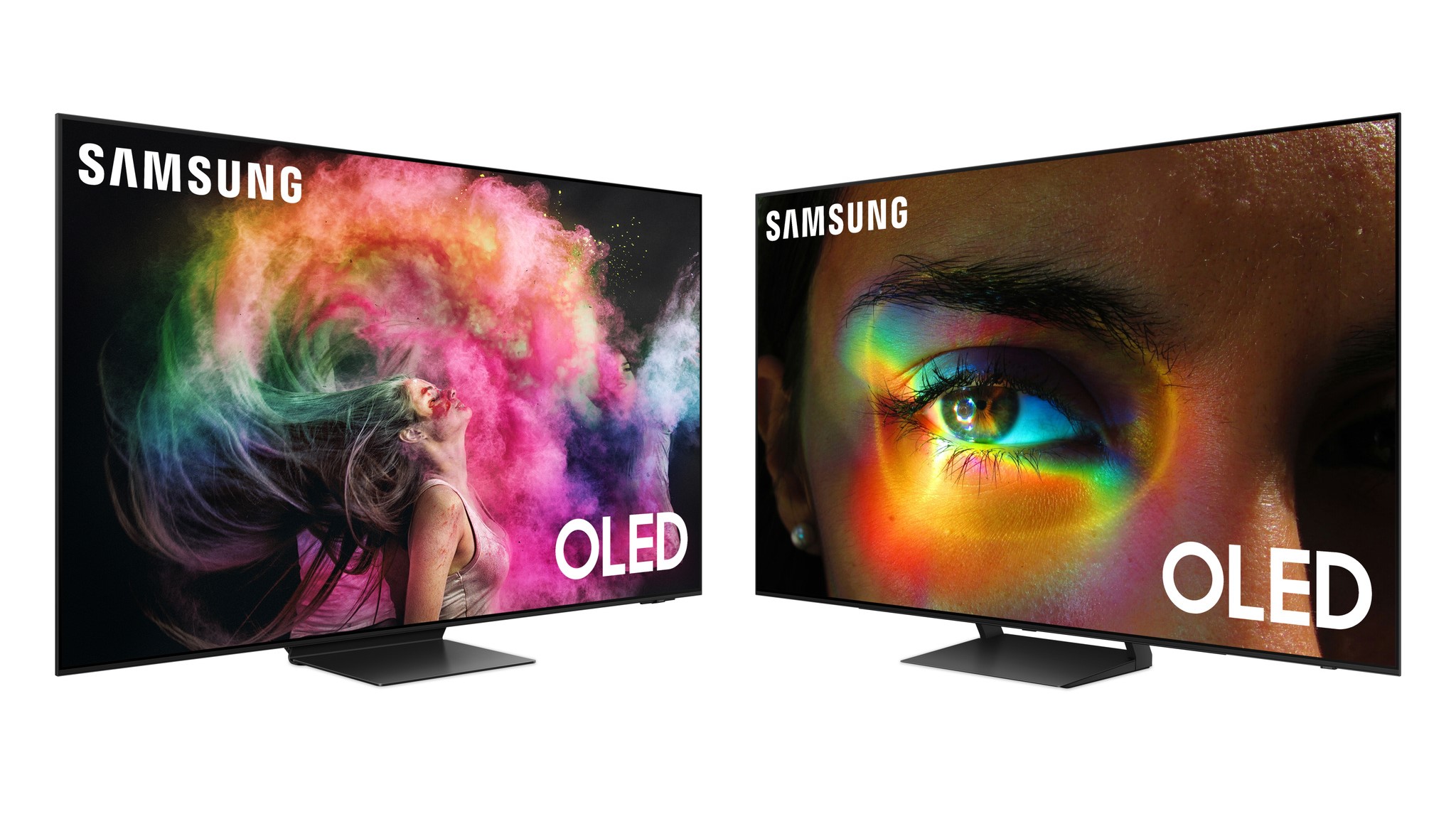Samsung has announced pricing for its new OLED TVs in the US. The lineup includes two series, the Samsung S95C and Samsung S90C, with both featuring sets in 55-, 65-, and 77-inch screen sizes. You’ll find the prices listed below for the new Samsung OLED TV lines, which the company is rolling out to retailers starting today.
Last year’s Samsung S95B was one of the best 4K TVs of 2022, and we have similarly high expectations for these new models, especially following our hands-on Samsung S95C review conducted earlier this year. We’ll talk more about that model’s performance below, and also explain the differences between the two new OLED TV lines, but first here’s the US price list:
The good news here is that the new Samsung S90C series provides a less pricey option for those seeking an OLED TV but don’t want to pay a premium for the flagship S95C series. At $900 less than its S95C sibling, Samsung’s 77-inch S90C OLED in particular looks to be a good deal, and at $3,599 it’s priced almost the same as the forthcoming 77-inch LG C3 OLED TV, which is now available to pre-order directly from LG.
There’s bad news mixed in with the good here, though, and that’s the higher prices Samsung is charging for its flagship S95C models compared to last year’s S95B series OLED TVs. At launch, the 55-inch S95B was priced at $1,799 / £1,999 / around AU$2,700, while the 65-inch version was $2,799 / £2,999 / around AU$4,200. We had earlier predicted that the prices for the new S95C TVs in those screen sizes would be either equivalent or less, but they have turned out to be significantly higher.
Looking on the bright side, Samsung says its new S95C OLED TVs have 30% higher peak light output than last year’s S95B models, a claim we confirmed in our hands-on test of the 77-inch S95C. That’s due to a new, brightness-boosting Quantum HDR OLED Plus feature, one that uses AI deep learning to fine-tune brightness on a per-pixel level. The new S90C series omits that same tech, but instead has a regular Quantum HDR OLED feature that will presumably deliver lower peak light output than the S95C models are capable of hitting.

All of the new Samsung OLED TVs feature an anti-reflective coating to reduce screen glare. The S95C series has Samsung’s Object Tracking Sound+, a feature that, according to the company “uses AI to track the on-screen action and follows the movement with pinpoint accuracy,” while the S90C series comes with Object Tracking Sound Lite. Both series have Samsung’s Q-Symphony, which lets a Samsung soundbar work in tandem with the TV’s built-in speakers to create a more immersive audio experience.
There are key design differences between the Samsung S95C and S90C series OLED TVs. The S95C sports the company’s incredibly thin Infinity One Design, which uses an attachable Slim One Connect box for HDMI hookups. This allows for a near-flush wall mount, and the TV also comes with a center-mounted “blade” stand. The S90C series lacks the Slim One Connect box, and instead has built-in connections – something that will undoubtedly mean a bulkier design than the vanishingly slim S95C series.

More expensive OLED: a 2023 TV trend
When LG announced pricing for its new OLED TVs earlier this month, we were surprised to learn that prices on the whole were going up for most models. Also, the company didn’t announce a successor to the entry-level A2 series, a budget-friendly offering that we found to be a good option for movie fans in our LG A2 review.
Following the LG announcement, it should come as no surprise, then, that Samsung’s new OLEDs for 2023 mirror that upward price trajectory. New high-end OLED TVs like the Samsung S95C and the LG G3 (another model that impressed us during a recent extended demo) are notably brighter than last year’s models, with the Brightness Booster Max feature with MLA found in the G3 delivering a claimed 70% peak light output increase. That enhancement alone will make these new top TVs a must-have for viewers who may have been previously enamored of OLED's deep blacks and rich color reproduction, but wary of its lower brightness compared to mini-LED-backlit QLED TVs like Samsung’s new QN95C.
As our hands-on review of the S95C confirmed, Samsung’s new top OLED is a fantastic TV, and few who fork out the high sum the company is asking for it will be disappointed. Its design is top-notch, and it has a 4.2.2-channel built-in speaker system that we found to be an audible upgrade from the 2.2.2-channel configuration of last year’s S95B.
Samsung’s new OLEDs also offer features like Game Hub for cloud-based gaming with a new, streamlined Game Menu, Ambient Mode for displaying artwork, and Samsung TV Plus, a free TV portal offering 250 ad-supported channels.
While it’s not exactly a fully affordable option, the new Samsung S90C line may be the ticket for cost-conscious viewers wanting to take the OLED TV plunge this year. OLED TVs could be getting cheaper in the near future, but for now, merely less expensive OLED is a draw, and prices for these new TVs should drop further later in the year as the holiday selling season kicks in. We’ll be looking out for a final price announcement on that 65-inch S90C model, and hope to follow up with a full review of it in the near future.
No comments:
Post a Comment